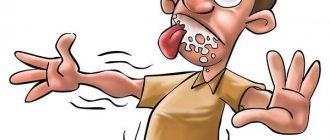Familial spastic paraplegia (Strumpel's disease)
- degenerative hereditary myelopathy with bilateral damage to the lateral and anterior spinal columns, mainly at the lumbar level. The basic clinical symptom is central paraparesis of the lower extremities. Strumpel's disease can be diagnosed by typical symptoms, family history, ENMG data, evoked potential studies, MRI and genetic tests. Treatment is based on the constant intake, intramuscular or endolumbar administration of muscle relaxants in combination with exercise therapy and physiotherapy.
History of the discovery of the diagnosis
1883 is the time when Strumpel identified hereditary forms of paraplegia.
As evidence, he described a number of cases of hereditary pathologies in patients suffering from weakness of muscle tissue in the legs. The clinical picture was supplemented by disturbances in vibration sensitivity and bladder functionality. Subsequently, M. Lorrain began studying the presented patients. Today, Strumpel's disease is an expanded group of pathologies. The disease was first described by the German neurologist Adolf Seligmühler in 1876. However, Adolf Strumpel studied and described it in more detail in 1883, who noted the hereditary nature of the disease.
In 1888, the study was continued by the French neurologist Maurice Laurent. In honor of the researchers, the disease was named Strumpel-Lauren disease; in modern practice, the name “Strumpel disease” is often used.
General information
Strumpel's disease is a chronic progressive pathology of the nervous system, which belongs to a group of heterogeneous ailments. It is characterized by bilateral damage to the so-called pyramidal tracts in the anterior and lateral cords of the spinal cord. Dominant forms of the disease develop during the first few years of a person’s life, while recessive forms occur at a later age and are characterized by a severe course.
This pathology was first described in detail by A. Strumpel in 1866. The specialist noted the familial nature of the disease. In the medical literature you can find other names for the pathology (Strumpel's paralysis, familial spastic paraplegia).
The course of the disease is defined as slowly progressive. When it occurs at an early age, it becomes more malignant. In the case of late development, hypertension and hyperreflexia most often prevail over various motor disorders. The prognosis, according to experts, is favorable for patients. The degree of loss of normal working capacity primarily depends on the severity of central nervous system dysfunction.
According to the International Classification, Strumpel's disease (ICD-10) is coded G11.4.
Strumpell's familial spastic paralysis
The diagnosis usually does not cause difficulties if there is a familial nature of the disease and a typical clinical picture.
In atypical sporadic cases, the disease should be distinguished from the spinal form of multiple sclerosis, amyotrophic lateral sclerosis, spinal cord tumors and other pathological processes of various etiologies that cause compression of the spinal cord, as well as funicular myelosis, neurosyphilis and other forms of cerebellar-pyramidal degeneration. The spinal form of multiple sclerosis, along with lower spastic paraparesis, is characterized by a relapsing course, instability and temporary reversibility of individual symptoms, dysfunction of the pelvic organs, loss or asymmetry of abdominal reflexes and asymmetry of symptoms of the lesion in general, changes in immunological parameters of the blood and cerebrospinal fluid. Data on the hereditary nature of the disease are of decisive importance. Unlike amyotrophic lateral sclerosis, Strumpel's disease begins at a young age, there are no signs of peripheral motor neuron damage (fascicular twitching, atrophy of small muscles of the hand, characteristic EMG changes), or bulbar disorders. When differentiating from extramedullary tumors and spinal cord compression syndrome of other etiologies, segmental sensitivity disorders, asymmetry of limb damage, the presence of a block of the subarachnoid space and protein-cell dissociation in the cerebrospinal fluid during lumbar puncture, characteristic of tumors, are important. With neurosyphilis, in contrast to Strumpel's disease, there is a history of skin manifestations. The leading symptoms in the clinical picture are the symptoms of damage to the posterior cords of the spinal cord, characteristic pupillary disorders, changes in the blood and cerebrospinal fluid are determined.
Differential diagnosis of familial spastic paraplegia with other degenerative lesions of the spinal cord can sometimes be difficult. It helps to identify symptoms of damage to other parts of the nervous system (cerebellar, ophthalmic, etc.).
The course of the disease is slowly progressive; a more malignant course is noted when it occurs at an early age. With the late development of the disease, hypertension and hyperreflexia predominate over motor disorders.
Why is the patient sick?
Scientific research using the latest technologies has not led to the identification of a clear cause for the development of the disease. Most likely, this is due to the rarity of such clinical cases. In second place in probability is the well-defined genetic nature of the pathology, which “puts an end to” other provocateurs of the disease.
How exactly is Strumpel's disease inherited? Inheritance is transmitted along the family line from parents to children. In this case, there are three possible gene variants:
- autosomal dominant. One of the parents has a 50-100% chance of transmitting the disease to their child. Under such circumstances, dominant genes act as carriers of the disease, which are highly likely to be passed on to the child;
- autosomal recessive. We are talking about a low probability of hereditary transmission of pathology (0-50%). The information component of the disease is carried by genes, which, when interacting, act as recessive.
- variant with the X chromosome. When Strumpel's disease is inherited through the male line.
Manifestations of the disease
How does Strumpel's disease manifest itself? The symptoms of the pathology are simple. In the case of an uncomplicated form of the disease, symptoms are limited to paraparesis of the lower extremities, pain in the lumbar area, and increased tone of the leg muscles.
Let us note the symptoms that characterize all forms of the disease:
- difficulty walking (the nature depends on the age of the patient). In the case of a small child, difficulties arise at the stage of the baby learning to walk. Sick children are delayed in starting to move independently on their feet. While walking, the baby timidly steps over and transfers his body weight to his tiptoes. From infancy, the child loses the ability to have a correct gait. A middle-aged person may fall when walking and experience chronic pain in the lower extremities. The nature of the pain depends on the position and current condition of the patient. An elderly patient may experience a state of partial (complete) immobility. A person experiences joint pain, sometimes there is deformation of the joints;
- weakness of the leg muscles, increased muscle tone due to excessive tension;
- leg fatigue;
- chronic fatigue, nervousness;
- joint ailments;
- foot deformity;
- paraparesis of the lower extremities;
- paresthesia;
- atrophy of the leg muscles (sometimes arms);
- synchronicity of symptomatic manifestations;
- progressive nature of symptoms.
An advanced form of the disease can lead to urinary incontinence and leg cramps. Senile age is an additional complication of the pathology, which leads to the development of epilepsy, the appearance of disorders in the motor system, etc.
All symptoms of the disease are gradual and progress over time. For this reason, the disease may remain undetected for a long time.
Symptoms
Strumpel's disease progresses slowly and gradually, but at the same time constantly. It affects the functioning of the central nervous system; the most important symptom is changes in cells in the lumbar and thoracic spinal cord.
Ankylosing spondylitis is classified as a type of spondyloarthritis, an inflammatory disease that affects the joints. Without proper treatment, it affects the joints until it is impossible to walk.
At different stages of the progression of the disease, different symptoms appear. At an early stage:
- Increased muscle tone (at first it may only increase while walking)
- Decreased sensation of strength in the legs at the next stage of development.
- Development of spastic gait gradually.
- Walking on tiptoes during childhood, as well as a late start to walking, may be a sign of the development of the disease.
At a late stage of development:
- Spastic paresis, sometimes reaching plegia (weakening of movement until the complete loss of strength in the muscles).
- Paresthesia in the feet and legs.
- Joint diseases.
- Constant fatigue, irritability.
- Vibrational perception disorder.
- Atrophy (in late stages of the disease), ankylosis of joints.
- Deformation of the foot.
- Hand paresis.
- Urinary incontinence (usually in elderly patients).
The disease is also characterized by the fact that a person can remain in a standing position for quite a long time, but he has problems with walking. A certain position of the hips, a characteristic gait and deformation of the joints appear without disturbances of the sphincters or sensitivity. The person retains his intellectual abilities.
Sometimes other ailments are added to the disease. Especially if it has a complex shape. Often these are neurological disorders (from mild mental retardation to dementia). Epilepsy, cerebellar syndrome, hearing loss, and dysarthria are also possible. The complex form of Strumpel's disease requires a lot of attention.
Heredity of the disease
This disease can be transmitted exclusively by inheritance. In total, experts distinguish several types:
- Autosomal dominant (in a married couple where one of the parents suffers from this pathology, the probability of having a child with this diagnosis ranges from 50 to 100%).
- Autosomal recessive (the probability of giving birth to an unhealthy child in a couple where one of the parents is already sick can be from 0 to 50%).
- X-linked (most often the disease is diagnosed in males).
In medical practice, there are special cases (for example, Beer's syndrome, which is manifested by atrophy of the optic nerve), when the symptoms of the disease are very similar to familial spastic paraplegia, but are still independent diseases.
Forms of the disease
In official sources, the disease described is presented in two main forms:
- Complicated.
- No complications.
In the first case, numerous neurological and vascular pathological manifestations are added to the main symptoms of the disease. For example, the heart rhythm is disturbed, epilepsy attacks appear, vision and hearing deteriorate, signs of ataxia appear, and mental disorders are observed.
If we talk about a disease without complications, then under such circumstances the clinical picture is clear: the patient’s condition is characterized by classic symptoms, there are no abnormal manifestations in the patient’s nervous system.
Based on the characteristics of the course of pathology, in medical practice the following forms are distinguished:
- Uncomplicated (the clinical picture in patients is dominated by weakness in the muscles of the lower extremities without concomitant disorders).
- Complicated (in addition to the above symptoms, patients are also diagnosed with heart defects, foot deformities, etc.).
Depending on the presence of confirmed cases of the disease among close relatives, the following are distinguished:
- Family Strumpel's disease (inheritance is carried out from parents to children).
- Idiopathic variant of the disease (in this case, a family history of the pathology cannot be detected).
Diagnosis of the disease Strumpel's familial spastic paralysis
The diagnosis usually does not cause difficulties if there is a familial nature of the disease and a typical clinical picture.
In atypical sporadic cases, the disease should be distinguished from the spinal form of multiple sclerosis, amyotrophic lateral sclerosis, spinal cord tumors and other pathological processes of various etiologies that cause compression of the spinal cord, as well as funicular myelosis, neurosyphilis and other forms of cerebellar-pyramidal degeneration. The spinal form of multiple sclerosis, along with lower spastic paraparesis, is characterized by a relapsing course, instability and temporary reversibility of individual symptoms, dysfunction of the pelvic organs, loss or asymmetry of abdominal reflexes and asymmetry of symptoms of the lesion in general, changes in immunological parameters of the blood and cerebrospinal fluid. Data on the hereditary nature of the disease are of decisive importance. Unlike amyotrophic lateral sclerosis, Strumpel's disease begins at a young age, there are no signs of peripheral motor neuron damage (fascicular twitching, atrophy of small muscles of the hand, characteristic EMG changes), or bulbar disorders. When differentiating from extramedullary tumors and spinal cord compression syndrome of other etiologies, segmental sensitivity disorders, asymmetry of limb damage, the presence of a block of the subarachnoid space and protein-cell dissociation in the cerebrospinal fluid during lumbar puncture, characteristic of tumors, are important. With neurosyphilis, in contrast to Strumpel's disease, there is a history of skin manifestations. The leading symptoms in the clinical picture are the symptoms of damage to the posterior cords of the spinal cord, characteristic pupillary disorders, changes in the blood and cerebrospinal fluid are determined.
Differential diagnosis of familial spastic paraplegia with other degenerative lesions of the spinal cord can sometimes be difficult. It helps to identify symptoms of damage to other parts of the nervous system (cerebellar, ophthalmic, etc.).
The course of the disease is slowly progressive; a more malignant course is noted when it occurs at an early age. With the late development of the disease, hypertension and hyperreflexia predominate over motor disorders.
Modern classification
There are several classifications of Strumpel's disease, which take into account several aspects.
According to the mechanism of inheritance, they are divided into the following types:
- autosomal dominant type;
- autosomal recessive type;
- X-linked type.
Depending on the clinical manifestations and specifics of the course, the following forms are distinguished:
- uncomplicated form - there is spastic lower paraparesis, without other disorders;
- complicated form - in addition to lower paraparesis, there is atrophy of the optic nerves, dysarthria, retinopathy, cerebellar ataxia, epilepsy, mental retardation, hearing disorders, cardiac malformations, foot deformities).
Based on heredity, Shtrumpel's disease is divided into:
- familial - the disease is transmitted from the older generation to the younger;
- idiopathic - the disease is undocumented in the family history.
Depending on the age at which the disease began to develop, there are two types:
- type 1 – the disease develops before the age of 35, spasticity of the lower extremities is observed more often than weakness, walking is less difficult;
- type 2 – the disease occurs after the age of 35, muscle weakness, disturbances in the urinary tract, muscle weakness are more often observed, the development of the disease is faster than with the first type.
The disease is also classified depending on the gene defect. Types are designated by the international abbreviation of the familial spastic paraplegia gene (SPG) followed by numbers from 1 to 76 (the numbers represent the loci at which the mutation occurred). At the moment, it is believed that type 4 SPG is the most common (more than a third of cases of the disease).
Strumpel-Marie-Bekhterev disease is considered hereditary. However, practice demonstrates cases of the absence of a genetic component of the developed pathology.
It is precisely because of the dual nature of the disease that another classification of the disease appeared:
- Hereditary.
- Non-hereditary (idiopathic).
Classification of Strumpel's disease
In clinical practice, a classification of familial spastic paraplegia is used, which takes into account several different aspects. Depending on the mechanism of inheritance, autosomal dominant, autosomal recessive and X-linked forms are distinguished. In the first case, if one of the parents has Strumpel’s disease, then the probability of the disease in the offspring is 50%. In the second, a disease in a child is possible if both parents are carriers of the defective gene, the risk of having a sick child is 25%. In X-linked inheritance, only males are affected; women are carriers of the pathological gene.
According to clinical manifestations, Strumpel's disease is classified into uncomplicated (simple) and complicated (complex) forms. The former are not accompanied by other leading symptoms other than spastic lower paraparesis, the latter are its combination with other neurological disorders (epilepsy, mental retardation, hearing impairment, optic nerve atrophy, retinopathy, cerebellar ataxia, dysarthria). There are also Strumpell's disease with onset in childhood, adolescence and adulthood.
Based on the type of gene defect, the classification is constructed in the form of a numerical sequence. The English abbreviation for the familial spastic paraplegia gene is SPG, followed by a number from 1 to 56 or more (due to the constant discovery of new types of mutations). Studies have shown that the most common type is SPG4, which accounts for up to 40% of cases.
Diagnostic measures
How is Strumpel's disease diagnosed? Diagnosis of the disease consists of several periods, including certain measures. First of all, the doctor carries out a general examination of the patient and talks to him about the symptoms that have appeared. The doctor excludes or confirms the fact of heredity, learns about the nature of the self-medication before going to the hospital.
At the second stage, the patient is referred to a neurologist. A neurologist dealing with Strumpel's disease conducts a series of exercises with the patient, after which he evaluates the muscle tone of the limbs, identifies possible reflex pathologies and the synchronicity of the lesion.
The list of diagnostic measures may include magnetic resonance (computer) tomography of the spinal cord. The procedures help specialists identify structural abnormalities and evaluate the tracts and cords of the spinal cord.
In order to confirm the hereditary nature of the disease, a DNA study is carried out in order to study possible malfunctions in the gene set.
The first stage of diagnosis is to study the medical history (whether there are similar complaints in the family history), asking the patient about how long ago the symptoms appeared (increased muscle tone, weakness in the lower extremities, stiffness in the legs, speech difficulties).
The neurologist must assess the strength in the muscles of the upper and lower extremities, muscle tone, and determine the presence of pathological reflexes. With Strumpel's paraplegia, muscle tone decreases with repeated movements.
Spinal cord studies (computed tomography and magnetic resonance imaging) can detect disorders in the pyramidal system by examining the spinal cord layer by layer. However, the likelihood of detecting changes in the spinal cord is not high.
Due to the hereditary nature of Strumpel's disease, for diagnostic purposes it is necessary to conduct genetic analysis and molecular genetic studies. Conducting these studies is possible during the prenatal period.
A study using electroneuromyography helps to identify neuropathy and its degree of development. Using the study of sensory evoked potentials, a delay in the conduction of impulses along the posterior columns of the spinal cord can be detected.
The study of cortical evoked potentials helps to detect the low speed of impulse transmission along the path from the cortex to the spinal cord.
In complex forms of the disease, differential diagnosis is carried out. The neurologist must exclude diseases such as amyotrophic lateral sclerosis, spinal multiple sclerosis, spinal cord tumor, neurosyphilis, and vascular myelopathy. Magnetic resonance imaging helps differentiate Strumpell's paraplegia from leukodystrophy.
Clinical picture
Symptoms of Strumpel's disease appear gradually and do not develop quickly. At the beginning of the development of the disease in childhood, the main signs are difficulties in learning to walk, developing this skill, and walking on tiptoes.
Paraplegic - a classic type of person with Strumpel's disease
When the disease develops at an older age, the manifestations begin with difficulty walking, fatigue of the legs, cramps, problems with bending the legs at the knees and hip joint, and frequent falls.
Then the symptoms become more intense, movement becomes more difficult, and patients find it difficult to move their feet.
Muscle weakness of the lower extremities occurs long after the onset of the disease. In recessive forms of the disease, the period of decrease in muscle strength is several years, and in dominant forms this period occurs much later than in recessive forms.
Muscle tone increases from the very beginning of the disease, while the muscles cannot completely relax and are tense all the time.
Spasticity is observed in the deep part of the triceps surae muscle (soleus muscle), adductor and posterior femoral muscles.
Spasticity may be asymmetrical and present only in one limb, but upon examination an increase in tone is revealed on both sides, and hyperreflexia of both lower limbs is observed.
Hyperreflexia is accompanied by extensor and flexion pathological foot reflexes (arising due to damage to the pyramidal system, which ensures muscle movements).
In the later stages of the disease, atrophic changes occur in the leg muscles, caused by a partial or complete decrease in activity due to paresis.
In diseases of types SPG 10 and SPG 17, the muscles of the upper limbs atrophy. In the extreme stages of the disease, there is a possibility of spastic paresis of the upper extremities, disruption of the pelvic organs, and involuntary leakage of urine.
In the SPG 19 form of the disease, urinary incontinence occurs with the onset of the disease, but in other forms it is more common in older patients.
In complicated forms of Strumpel's disease, a paraplegic has neurological symptoms:
- cognitive impairment (decreased intellectual abilities, mental retardation, dementia);
- epilepsy;
- dysarthria;
- retinopathy;
- optical neuropathy;
- extrapyramidal syndromes;
- hearing impairment;
- pseudobulbar syndrome.
History of the discovery of the diagnosis
When symptoms appear, it is very important not to self-medicate, but to seek help from a doctor. At the appointment, the specialist first collects the patient’s medical history, listens to complaints and asks questions (when did the weakness in the legs appear, did close relatives have similar pathologies, etc.).
The next step is a neurological examination. It involves assessing muscle strength in the arms and legs and searching for pathological reflexes. Additionally, computed tomography and magnetic resonance imaging of the spinal cord itself may be prescribed. Such a study allows us to study its structure in as much detail as possible and identify possible thinning of the pyramidal tracts. Note that in most cases no pathological changes are detected on CT and MRI.
How else can Strumpel's disease be confirmed? Diagnosis of the disease also includes the study of sensory potentials. This method allows you to assess the degree of conduction of sensory impulses throughout the spinal cord. A DNA test is mandatory to identify the presence of gene mutations.
Particular attention should be paid to differential diagnosis, which in some cases causes difficulties. It is extremely important to differentiate this disease from Mills syndrome, a degenerative lesion of the central nervous system characterized by dilation of the cerebral ventricles and atrophy of the frontal and precentral gyri. Clinically, this disease manifests itself slowly. In the last stages of the disease, bilateral paralysis is observed.
It is important to differentiate familial spastic paraplegia from the so-called spinal type of multiple sclerosis. Here it is necessary to take into account the state of abdominal reflexes, sphincters, and the course of the entire disease. In this case, special attention is paid to the patient's medical history. Only after passing all the tests can Strumpel's disease be confirmed.
Diagnostic criteria
The first stage of diagnosis is to study the medical history (whether there are similar complaints in the family history), asking the patient about how long ago the symptoms appeared (increased muscle tone, weakness in the lower extremities, stiffness in the legs, speech difficulties).
Article on the topic: Duspatalin - instructions for use, release form, composition, dosage, indications and price
The neurologist must assess the strength in the muscles of the upper and lower extremities, muscle tone, and determine the presence of pathological reflexes. With Strumpel's paraplegia, muscle tone decreases with repeated movements.
Spinal cord studies (computed tomography and magnetic resonance imaging) can detect disorders in the pyramidal system by examining the spinal cord layer by layer. However, the likelihood of detecting changes in the spinal cord is not high.
Due to the hereditary nature of Strumpel's disease, for diagnostic purposes it is necessary to conduct genetic analysis and molecular genetic studies. Conducting these studies is possible during the prenatal period.
A study using electroneuromyography helps to identify neuropathy and its degree of development. Using the study of sensory evoked potentials, a delay in the conduction of impulses along the posterior columns of the spinal cord can be detected.
The study of cortical evoked potentials helps to detect the low speed of impulse transmission along the path from the cortex to the spinal cord.
In complex forms of the disease, differential diagnosis is carried out. The neurologist must exclude diseases such as amyotrophic lateral sclerosis, spinal multiple sclerosis, spinal cord tumor, neurosyphilis, and vascular myelopathy. Magnetic resonance imaging helps differentiate Strumpell's paraplegia from leukodystrophy.
Treatment of pathology
Is it possible to cure Strumpel's disease? The treatment that modern medical science can offer cannot be called 100% effective. The main goal of the therapy is to reduce the symptoms and improve the patient’s quality of life.
The patient takes medications whose action is aimed at reducing muscle tone. For example, Baclofen. The group of recommended medications includes various tranquilizers and vitamins. Physiotherapeutic procedures, pine needle baths, applications on the legs using paraffin will alleviate the patient’s condition. Sometimes it makes sense to undergo reflexology, acupressure, or physical therapy.
The importance of orthopedic therapy, which involves the use of special prostheses that help the patient move, cannot be underestimated.
Some experts recommend a simulator for Strumpel's disease, exercises on which are aimed at reducing muscle tone.
It is worth knowing that therapy in each clinical case is individual. The doctor takes into account not only the results of diagnostic measures, but also the current condition of the person, the severity of the clinical picture, and existing diseases.
Treatment of Strumpel syndrome in Israel
Professional treatment of Strumpel's syndrome at the Hadassah University Clinic is carried out according to the most modern schemes using the most current technological developments in world medicine.
To find out more about the capabilities of the Hadassah Clinic in the treatment of Strumpell's syndrome, call the telephone numbers provided or fill out an electronic application for treatment.
Why is it important to treat Strümpel's syndrome?
Strumpel's syndrome is a severe hereditary disease that affects the human nervous system. The first manifestations of the disease occur closer to 40 years of age, much more often in men than in women. With the syndrome, the patient complains of stiffness and fatigue in the legs. Gradually, the symptoms increase, and the normal function of the pelvic organs is disrupted. Doctors may note a changed gait, muscle weakness, and deformed feet.
How is Strumpel's syndrome diagnosed at the Hadassah Clinic?
Despite some eloquent signals, such as a complaint about the inability to lift the feet off the floor, Strumpel syndrome is confirmed only by one reliable method - DNA diagnostics . At the Hadassah clinic, a patient can undergo all the necessary examinations in order to identify a hidden disease, or learn about the progress of a manifested one, in just a few days.
First stage. Visit to the clinic
In order to make a diagnosis of Strumpel syndrome, the patient needs to undergo a consultation with an experienced neurologist. The doctor will examine you and perform specific tests. For example, the Strumpell reflex test, which consists of a specific bending of the big toe when the patient tries to bend the leg at the knee, when the doctor provides slight resistance. The doctor also gives directions for additional studies.
Second phase. Diagnostics
In order to select the optimal treatment, doctors must make sure that the patient does not suffer from similar diseases - multiple sclerosis, spinal cord tumors, myelopathy, and so on. To do this, the following tests are carried out:
Magnetic resonance imaging. This modern study will help identify mild nonspecific spinal cord atrophy;
Laboratory tests of blood, urine, cerebrospinal fluid;
DNA test.
Third stage. Selection of treatment method
After confirming the diagnosis, doctors analyze the data and the patient’s condition and select the optimal method of treating the symptoms of Strumpel syndrome.
How is Strumpel's syndrome treated at the Hadassah Clinic?
Since the syndrome is a hereditary genetic disease, treatment can only be symptomatic. The prognosis for the disease is favorable if symptomatic therapy is selected professionally. At the Hadassah Clinic, patients with Strumpel syndrome are offered the following treatment methods:
Drug therapy . To improve the patient's condition, various drugs are prescribed. Many Israeli medicines have no analogues and have a significant therapeutic effect;
Botulinum toxin injections . Such actions are akin to how women give Botox injections to prevent the appearance of wrinkles. In the case of Strumpel syndrome, injections are needed to prevent the development of the disease;
Physiotherapy . Rehabilitation specialists at the Hadassah Clinic select optimal physical exercises and physiotherapeutic procedures for the patient that will help maintain mobility and muscle strength.
Call or write to the Hadassah clinic at any time convenient for you, so that our consultants can tell you everything you need about the treatment procedure, prices and conditions of medical tourism in Israel.
Our doctors [show full list of doctors]
Professor Ben-Hur
Head of the Department of Neurology
Professor Lecker
Head of the Center for Cerebrovascular Diseases, Senior Neurologist
Professor Karousis
Leading specialist in the treatment of multiple sclerosis, Head of the Neurology Center
Possible complications and consequences
Strumpel's disease is dangerous not only for its clinical picture. A person with such a diagnosis sooner or later loses the ability to fully move without assistance. In addition, the disease leaves its mark on work adaptation due to a pronounced defect of a neurological nature in the form of weakness of the leg muscles.
The danger of the described disease is based not only on symptoms. Over time, a person suffering from an illness loses the ability to move independently and live a full life. A neurological defect – weakness of the leg muscles – entails the need for the patient to adapt to work.
As a result, the patient cannot always continue to do what he loves and loses interest in his own life. Patients need not only specialized help, but also the support of a psychotherapist.
Preventive measures
Modern medicine, unfortunately, cannot offer adequate methods for preventing this disease, since its main causes are unknown.
On the other hand, experts are confident that one should try to lead a healthy lifestyle, eat a balanced diet, give preference to healthy foods, and not smoke. Sports activities have a strengthening effect on the entire body as a whole. If close relatives have a history of Strumpel's disease, it is advisable to consult a doctor on this issue and, if necessary, undergo a full examination several times a year. This approach will not only allow timely detection of pathology, but also take all measures to reduce its progression.
Consequences and prognosis
Strumpel's disease is not life-threatening, but it reduces the patient's quality of life and ability to work. Hereditary spastic paraplegia can progress and have varying degrees of symptom severity. The prognosis for the development of the disease is individual in each specific case.
The most severe disease occurs when it occurs at an early age. During puberty, the condition of patients with uncomplicated forms may become stable.
In most cases, patients are able to walk independently, but complete loss of the ability to move is also possible.
Patients often have a normal life expectancy.
Experts encourage patients by giving favorable prognoses as the disease progresses. Doctors say that correct and timely treatment of the disease can not only reduce the manifestation of symptoms, but also significantly improve a person’s quality of life. The disease itself is not classified as a fatal disease.
How to protect yourself?
To date, there are no effective methods for preventing the disease. This is due to the lack of certainty about the cause of the disease. Experts say that a healthy lifestyle, proper nutrition and moderate physical activity can protect a person from the threat. The above measures will strengthen the immune system, which means they will only contribute to the healthy development of the body.
If we are talking about an existing hereditary predisposition to the disease, it is necessary to consult with a number of doctors and regularly undergo a full examination. Such an approach will help not only to quickly respond to the emerging disease, but also to slow down the pace of its development.
Regular visits to your local doctor, undergoing a general examination of the body, taking tests is an indispensable preventive measure that will “work” in the case of any disease.
Strumpel's disease poses an incredible threat to society. Photos of patients suffering from a hereditary disease literally filled specialized medical reference books. An unusual pathology requires not only effective and long-term treatment, but also the support of relatives and loved ones.









